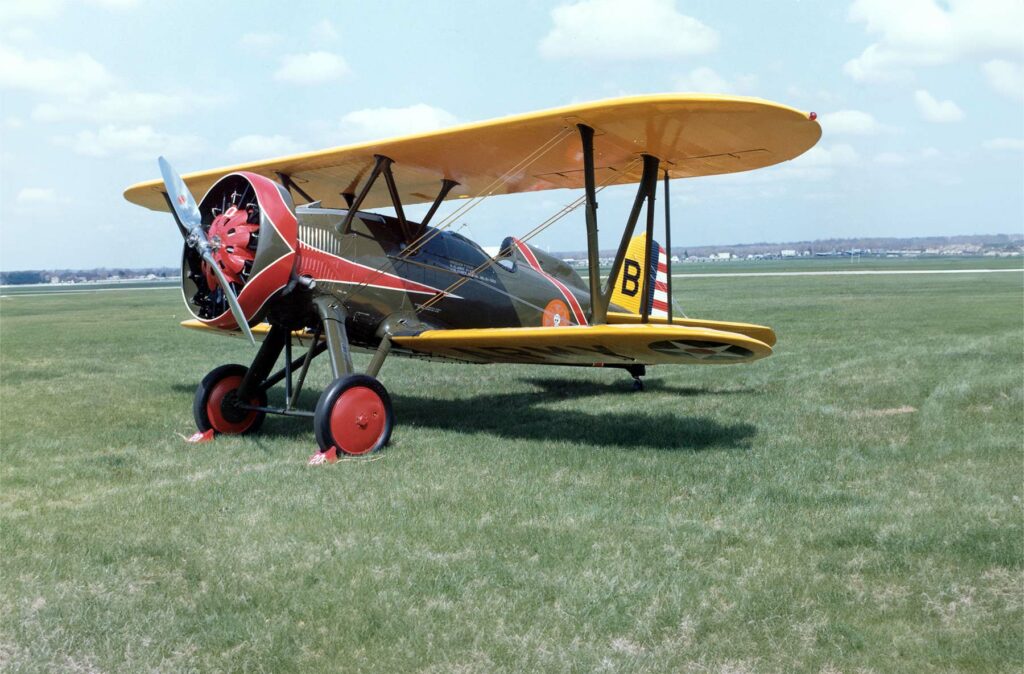The Boeing P-12/F4B, an iconic American biplane fighter of the 1930s, known for its Pratt & Whitney radial engine, maneuverability, and service with the US military. This article offers an in-depth look at the Boeing P-12/F4B, exploring its development, design, performance, and military service. It highlights the aircraft’s role in the advancement of fighter technology during the interwar period and its significance in the evolution of American military aviation.
The Boeing P-12/F4B was a pivotal fighter aircraft in American aviation history, representing a significant development in the interwar period. As a mainstay of both the United States Army Air Corps and Navy, it played a critical role in the evolution of fighter aircraft design. This article delves into the development, design, performance, and operational history of the P-12/F4B.
History of the Development of the Boeing P-12/F4B:
In the 1920s, the rapidly advancing field of aviation saw the emergence of new technologies and an increased focus on military airpower. The Boeing P-12/F4B was developed against this backdrop, at a time when the United States sought to modernize its aerial combat capabilities.
The development of the P-12/F4B was initiated by the Boeing Airplane Company, under the guidance of Boeing’s chief designer, James Floyd Smith. The project aimed to create a superior biplane fighter that could outperform existing models in speed, agility, and firepower. The first flight of the P-12 occurred in 1928, marking a significant milestone in American military aviation.
This era was characterized by a transition from World War I-era aircraft to more advanced designs. The P-12/F4B was developed in response to this trend, aiming to provide the US military with a state-of-the-art fighter aircraft.
Design of the Boeing P-12/F4B:
The Boeing P-12/F4B was a single-seat biplane fighter with a wingspan of 30 feet (9.14 meters) and a length of 20 feet 4 inches (6.20 meters). The aircraft featured a mixed construction, with a welded steel tube fuselage and fabric-covered wings.
Powered by a Pratt & Whitney R-1340 Wasp radial engine, the P-12/F4B was capable of producing around 500 horsepower (373 kW). This engine choice was significant, offering a combination of power, reliability, and efficiency.
The aircraft’s design included innovations such as an open cockpit, fixed landing gear, and a simple yet robust structure. However, as a biplane, its maximum speed and maneuverability were limited compared to later monoplane designs.
Despite these limitations, the P-12/F4B was notable for its ease of maintenance, operational reliability, and agile performance, setting a standard for future American fighter aircraft.

Performance of the Boeing P-12/F4B:
The performance of the Boeing P-12/F4B was competitive for its time. The Pratt & Whitney engine enabled a top speed of approximately 189 mph (304 km/h), with a service ceiling of around 26,300 feet (8,016 meters) and a range of about 570 miles (917 km).
Compared to contemporaries like the British Bristol Bulldog or the Italian Fiat CR.32, the P-12/F4B was on par in terms of speed and maneuverability. Its robust construction and reliable engine performance made it a respected fighter in the international arena.
Military Use and Combat of the Boeing P-12/F4B:
The Boeing P-12/F4B saw extensive service with the United States Army Air Corps and Navy. Its armament typically included two .30 caliber machine guns, making it effective in dogfights and ground attack missions.
While the P-12/F4B did not see major combat, it played a vital role in air defense and pilot training during the interwar period. It was involved in various smaller conflicts and was valued for its dependability and combat effectiveness.
The aircraft was also exported to several countries, contributing to its role in global aviation history. It was eventually replaced by more advanced monoplane designs, such as the Boeing P-26 Peashooter, as aviation technology progressed.
The Boeing P-12/F4B stands as a significant aircraft in the history of military aviation, marking a period of transition and advancement in fighter aircraft design. Its development, operational service, and influence on subsequent aircraft designs highlight its importance in the evolution of American military aviation. While surpassed by later models, the P-12/F4B’s legacy in shaping the capabilities and tactics of fighter aircraft endures.
Back to the Warbirds section.